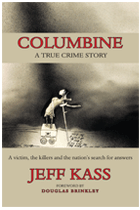Foreword
|
Jefferson County, Colorado entered our collective consciousness in a horrific way back in April 1999. A couple Holden Caulfields run amok stormed into Columbine High School and killed twelve classmates and a teacher and injured twenty-four others. Suddenly the names of murderers Eric Harris and Dylan Klebold became synonymous with derangement. Grotesquely, these two mass murderers had videotaped their plot to raid the school brandishing two shotguns, a rifle, and a semi-automatic. A huge public debate erupted over everything from gun control to Goth culture, violence in films to the use of anti-depressants for young people. Columbine became a one-word banner for American dysfunctionalism. Perhaps because Columbine was so disgusting to contemplate, few reporters probed deeply into the meaning of the debacle. After all, America had previously experienced two even more deadly school killings than Columbine. The Bath School bombings in 1927 left forty-five, including the bomber, dead. The University of Texas shooter in 1966 killed fourteen. An even worse spree occurred at Virginia Tech in 2007, but that is getting ahead of our story. For only Columbine seemed to stab into the dark underbelly of the American psyche like a knife that kept being twisted. It remains a stain on our culture which can't be rubbed out. All murders sicken the heart but Columbine continues to haunt the soul. Had our society gone completely wrong? Was Columbine a wake-up call to parents to start being more hands-on? Or were Harris and Klebold simply two bad seeds? Out of all the reporters covering the Colorado disaster, only Jeff Kass of the Rocky Mountain News kept the big picture constantly in focus. While the TV media milked Columbine for its ghastly week of soap-opera-ish drama Kass, with gumshoe persistence, stayed on the case like Sherlock Holmes. When the national TV trucks left Colorado for another tragedy he continued on the job with his trusty laptop and a jolt of coffee. The result is this fine work of narrative storytelling and muckraking journalism. Modeling Columbine: A True Crime Story after Truman Capote's In Cold Blood, Kass expertly probes the far-reaching consequences of the 1999 tragedy for a country where guns can be bought as if baseball cards at the Five-and-Dime store. Much like Norman Mailer in The Executioner's Song, Kass captures the flatness of Colorado life, the mundaneness of small town living, and how two miscreants decided to spice things up. The writing is rhythmic, sparse, and paced. The La-Z-Boy chair becomes as important to the narrative as the two sawed-off shotguns. Like any journalist worth his salt, Kass provides lots of minute detail which adds immeasurably to the saga: "Jesus Christ Superstar" on the stereo, Blackjack Pizza for the paycheck, Apocalypse Now in the VCR, and on and on. To produce this book Kass had to overcome numerous obstacles, including an uncooperative sheriff's office and the killers' parents who tried to block information. But if we make the leap that Columbine was a collective tragedy - a high school bloodbath that stained all our sensibilities - then only full disclosure can heal our gaping wound. Kass has delivered the goods in this important regard. This objective, honest, and eye-opening book sheds light on the warped phenomena of school shootings in general, which Kass believes are more prevalent in the South and West, than anywhere else. Dealing with insanity is no easy matter. Trying to get into the head of Hannibal Lecter-types is a crucifixion in its own right for an aspiring writer. It takes a steady hand to paddle through the muck: Emotional swings. Zombie behavior. Anti-social personality disorder. It's all a hard pill to swallow. How much more fun it is to cover Barack Obama at the Democratic National Convention. Add to the mix reams of legal documents and you understand why the typical reporter runs for the sun after the news cycle of an event like Columbine fades from the cable scroll. But Kass stayed with the story, in all its ugly turns of gloom and misery, and the result is truly impressive. For ten years Kass worked on this book, sniffing out ledes and procuring exclusives. So read it and weep. But also be glad that in our short-attention span society there is one old-fashioned reporter at the Rocky Mountain News who treats his journalistic oath seriously.
Douglas Brinkley |
